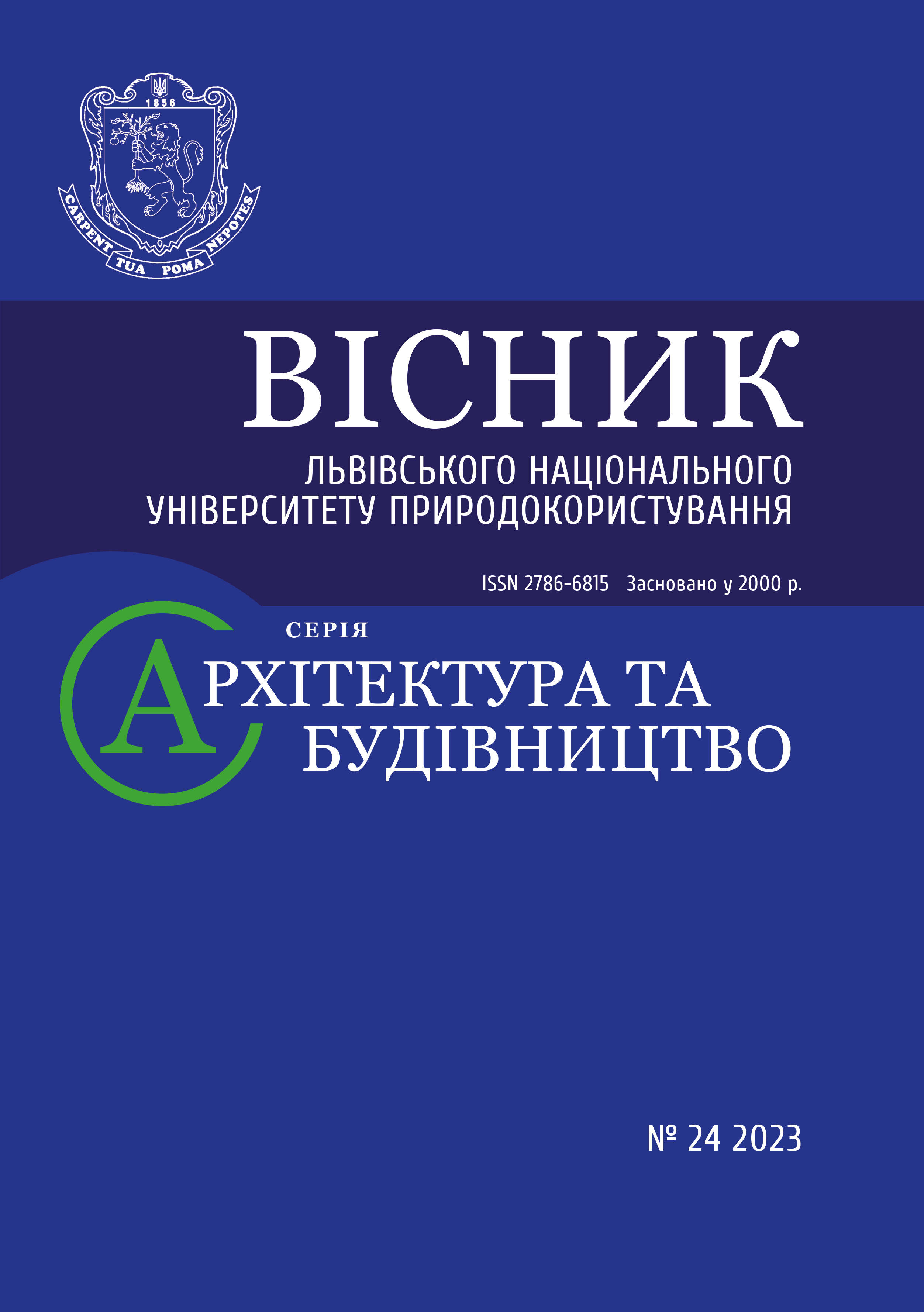MECHANICAL CHARACTERISTICS OF PET FIBER CONCRETE UNDER SHORT-TERM COMPRESSION
DOI:
https://doi.org/10.31734/architecture2023.24.052Keywords:
PET fiber, PET fiber concrete, test, compression, stress, itial modulus of elasticity, relative deformations, deformation diagramAbstract
The study aimed to investigate the effect of the volume percentage of PET fiber reinforcement on the strength and deformability of fine-grained concrete under short-term compression. The research adopted a complete two-factor experiment resulting in a regression equation for calculating the compressive strength of PET fiber concrete.
The research used fine-grained concrete of classes C20/25 and C30/35 as the matrix concrete, which is commonly used in structures without prestressing the rods. The research used fiber with dimensions of 40 × 3 × 0.2 mm as a dispersive reinforcement, and the coefficients of PET fiber reinforcement were taken as fv = 0.01 and fv = 0.03. The strength and deformability of PET fiber concrete under short-term compression were tested by testing 100 × 100 × 400 mm prisms.
To obtain concrete class C20/25, based on 1 m3, the following composition was adopted: cement PrJSC «Ivano-Frankivskcement» brand M400 with an activity of 42.3 MPa – 444.5 kg; sand with a grain size module of 2.1 from the Yasinetsky quarry – 1644.4 kg; water – 239.2 l. To obtain concrete class C30/35 based on 1 m3, the following composition was adopted: cement PJSC «Ivano-Frankivskcement» brand M500 with an activity of 53.1 MPa – 433.2 kg; sand with a grain size module of 2.1 from the Yasinetsky quarry – 1724.3 kg; water – 215.6 l.
The study found that increasing the percentage of fiber reinforcement leads to an increase in the strength of PET fiber concrete, the initial modulus of elasticity of PET fiber concrete, and a reduction in relative deformations at a specific stress intensity. The study proposed a mathematical model for determining the strength of PET fiber concrete based on a planned experiment. The author specified the formula for calculating the strength of PET fiber concrete, which was previously used to calculate the compressive strength of steel fiber concrete. The study also indicated the expediency of using the norm formula for designing reinforced concrete structures to describe the «stress – relative deformations» diagram of PET fiber concrete under short-term compression.
References
Adnan H. M., Dawood A. O. Strength behavior of reinforced concrete beam using re-cycle of PET wastes as synthetic fibers. Case Studies in Construction Materials. 2020. No 13.
Bilozir V. V. Formation and opening of cracks in normal sections of bending steel-fiber-concrete elements on a fiber from a sheet: dis. ... cand. tech. Sciences. Moscow, 1991. 164 p.
Bilozir Vit., Bilozir Vol. Justification of the parameters of fiber reinforcement from used polyethylene terephthalate. Bulletin of the Lviv National Agrarian University. Ser. Architecture and agricultural construction. 2016. No 17. P. 66–71.
DSTU B V.2.7-215:2009. Concretes. Rules of composition selection. To replace GOST 27006-86; effective 2010-09-01. Kyiv: Ministry of Regional Development of Ukraine, 2010. 1 p.
DSTU B V.2.7-217:2009. Concretes. Methods of determining prism strength, modulus of elasticity and Poisson's ratio. Kyiv: Ministry of Regional Development of Ukraine, 2010. 17 p. (National Standard of Ukraine).
DSTU-N B V.2.6-218:2016 Guide for the design and preparation of structures made of dispersed reinforced concrete. Kiev: DP «UkrNDNTs», 2017. 32 p. [Effective since 2017.04.01].
Dvorkin L. Y., Dvorkin O. L. Design of concrete compositions: monograph. Rivne: NUVHP, 2015. 353 p.
Dvorkin L. Y., Dvorkin O. L., Zhytkovskyi V. V. Solving construction and technological problems by methods of mathematical planning of the experiment: Study. manual. Rivne: NUVHP, 2011. 174 p.
Foti D. Use of recycled waste pet bottles fibers for the reinforcement of concrete. Construction and Building Materials. 2013. No 96. P. 396–404.
Kim J., Park C., Lee S. Effects of the geometry of recycled PET fibre reinforcement on shrinkage cracking of cement-based composites. Composites. 2008. No 39. P. 442–450.
Kinash R., Bilozir V. Deformational calculation method of bearing capability of fiber-concrete steel bending elements. Czasopismo Techniczne (Technical Transactions: Architecture), 2014. I. 8-A (15). No 111. P. 49–58.
Kinasz R., Bilozir V., Shmyh R., Bilozir V., Bidenko I. Examination of Concrete Elements Bending Strength Reinforced by Polyethylene Terephthalate (PET) Waste. IOP Conference Series: Materials Science and Engineering. 2019. Vol. 603.
Pacheco-Torgal F., Ding Y., Jalali S. Properties and durability of concrete containing polymeric wastes (tyre rubber and polyethylene terephthalate bottles): An overview. Construction and Building Materials. 2012. No 30. P. 714–724.
Recommendations for the design and manufacture of steel fiber concrete structures. Moscow: NIIZhB Gosstroy SSSR, 1987. 148 p.
Shmyh R. A., Bilozir V. V. Theoretical evaluation of the tensile strength of PET fiber concrete. Modern technologies and calculation methods in construction. 2022. Issue 18. P. 199–212.
Shmyh R., Bilozir V., Vysochenko A., Bilozir V. Сarrying capacity of bending concrete elements reinforced by fibro and stripes taken from used polyethyleneterephthalate bottles. International Scientific and Practica Conference World Science. 2018. No 2 (30). Vol. 1. Р. 88–93.
Sobczak-Piąstka J., Famulyak Y., Demchyna B. The application of non-traditional reinforcement in structural elements made of cellular concrete. AIP Conference Proceedings. 2023. Vol. 2949.
Won J. P., Jang C. I., Lee S. W. Long-term performance of recycled PET fibre-reinforced cement composites. Construction and Building Materials. 2009. No 24. P. 660–665.


